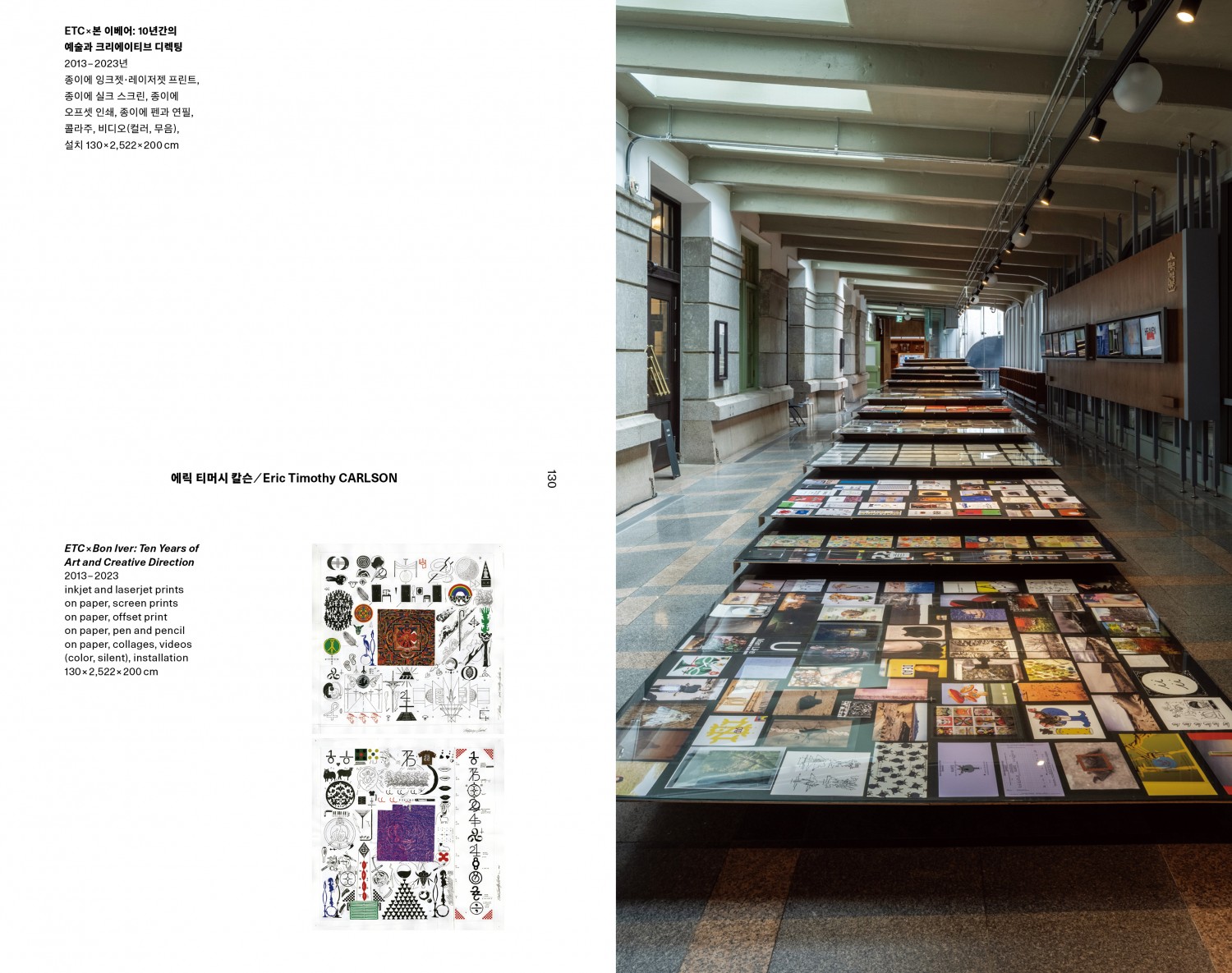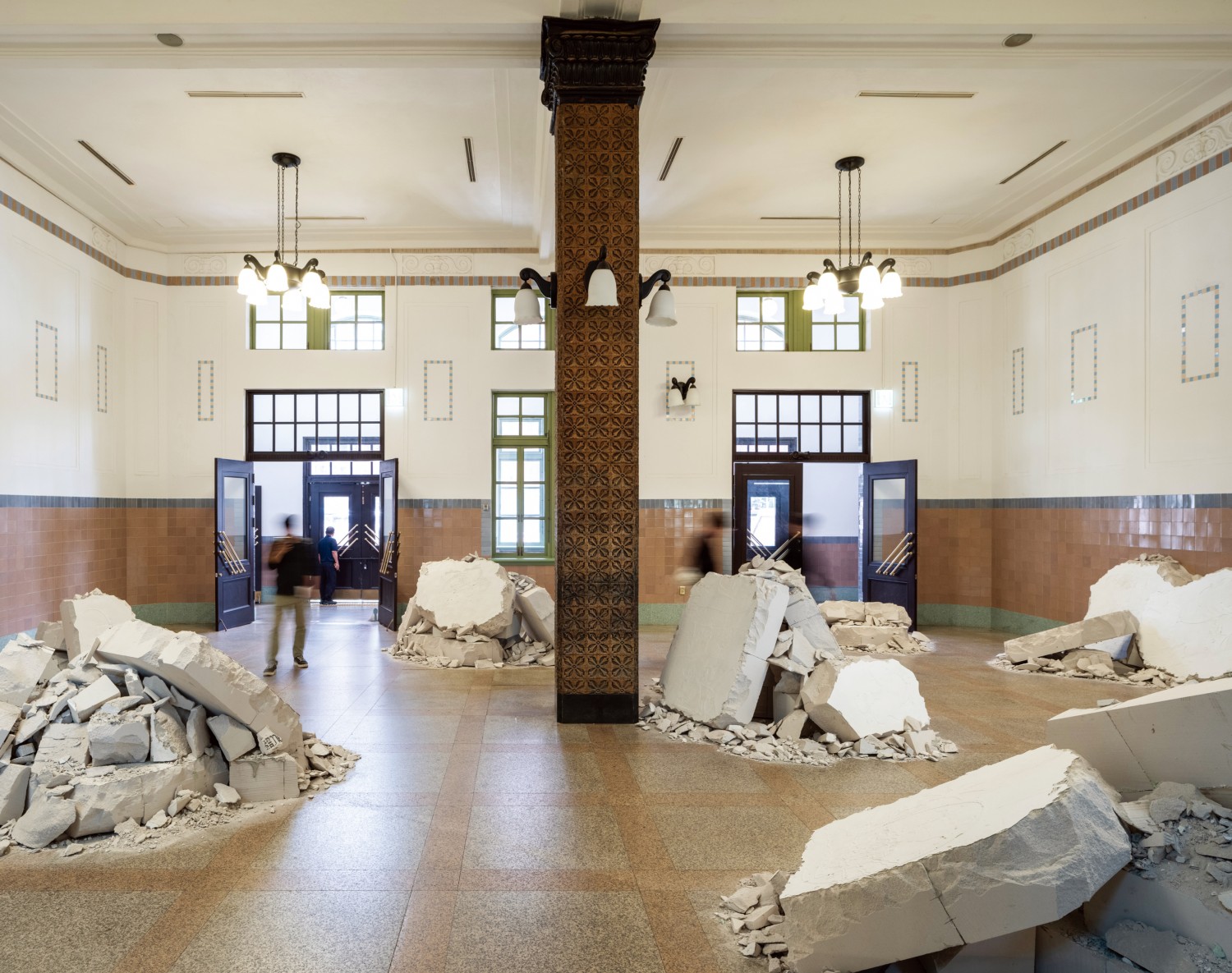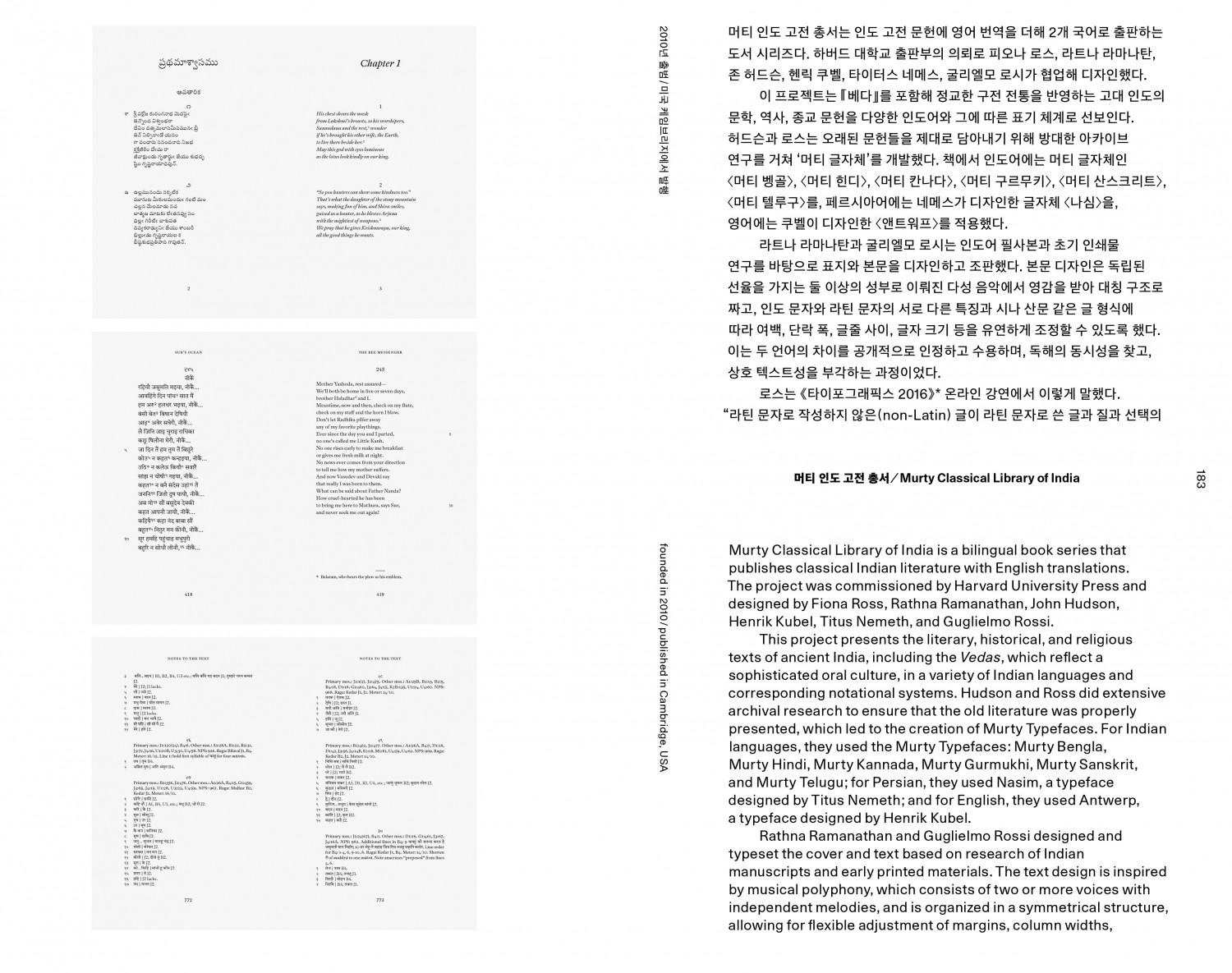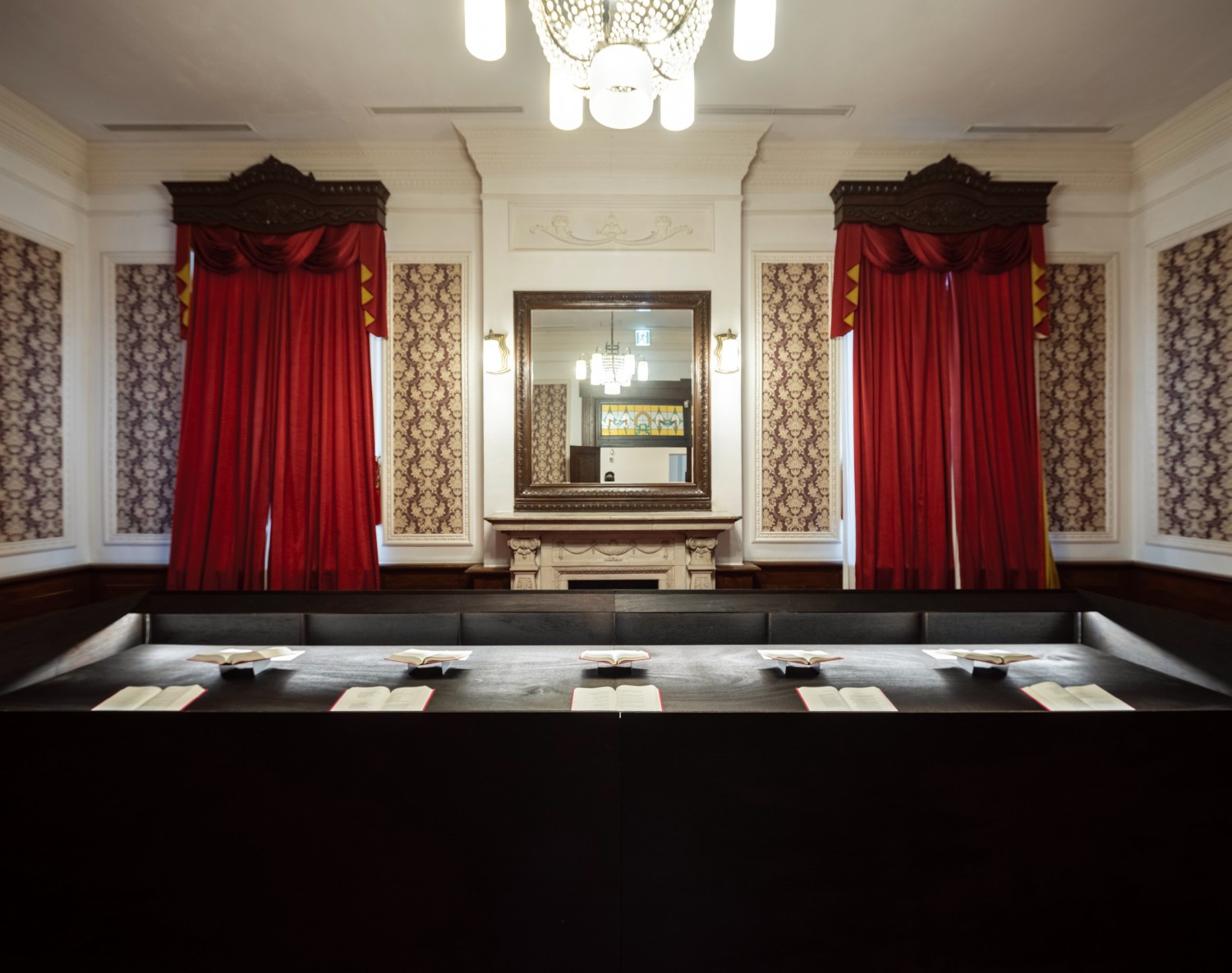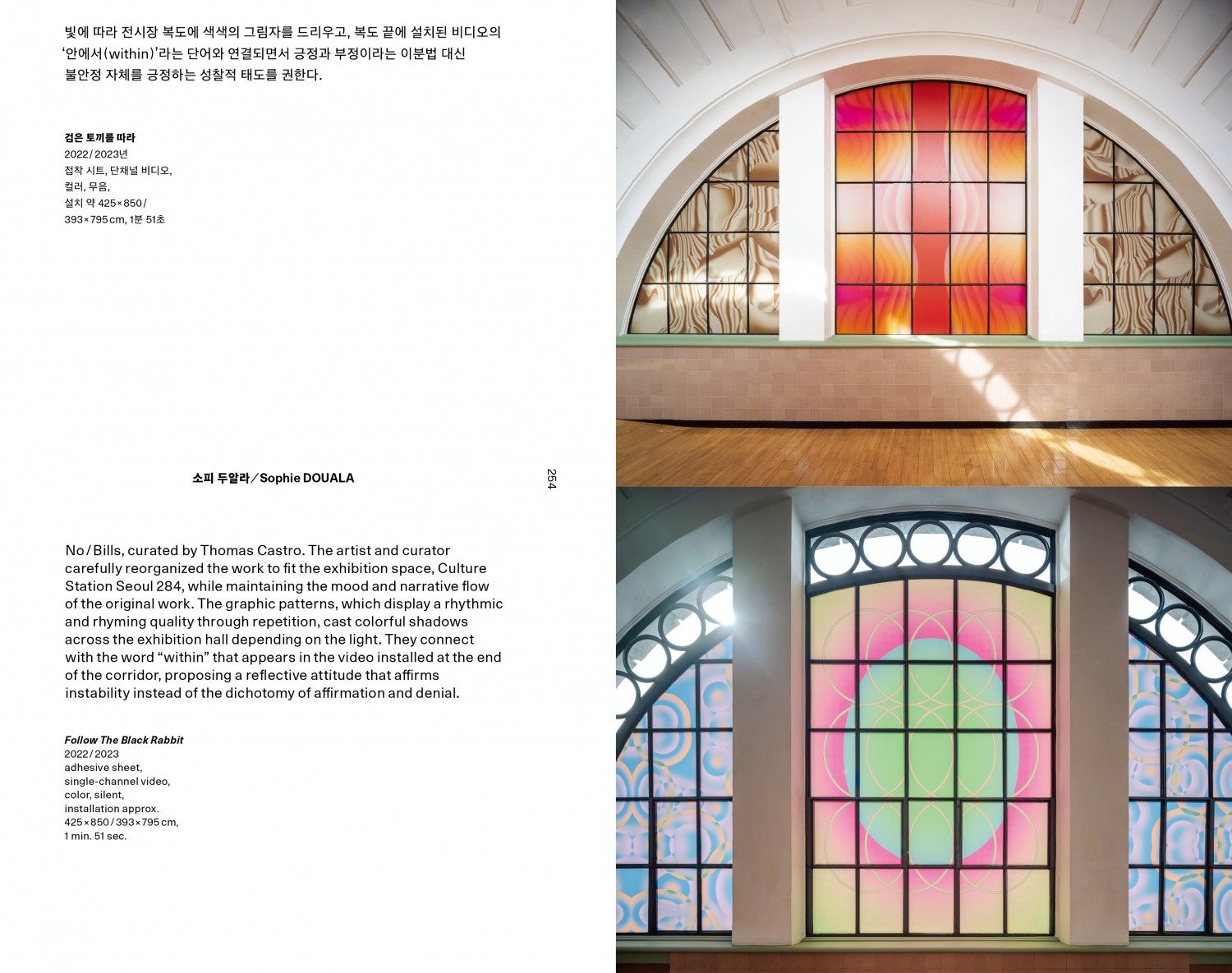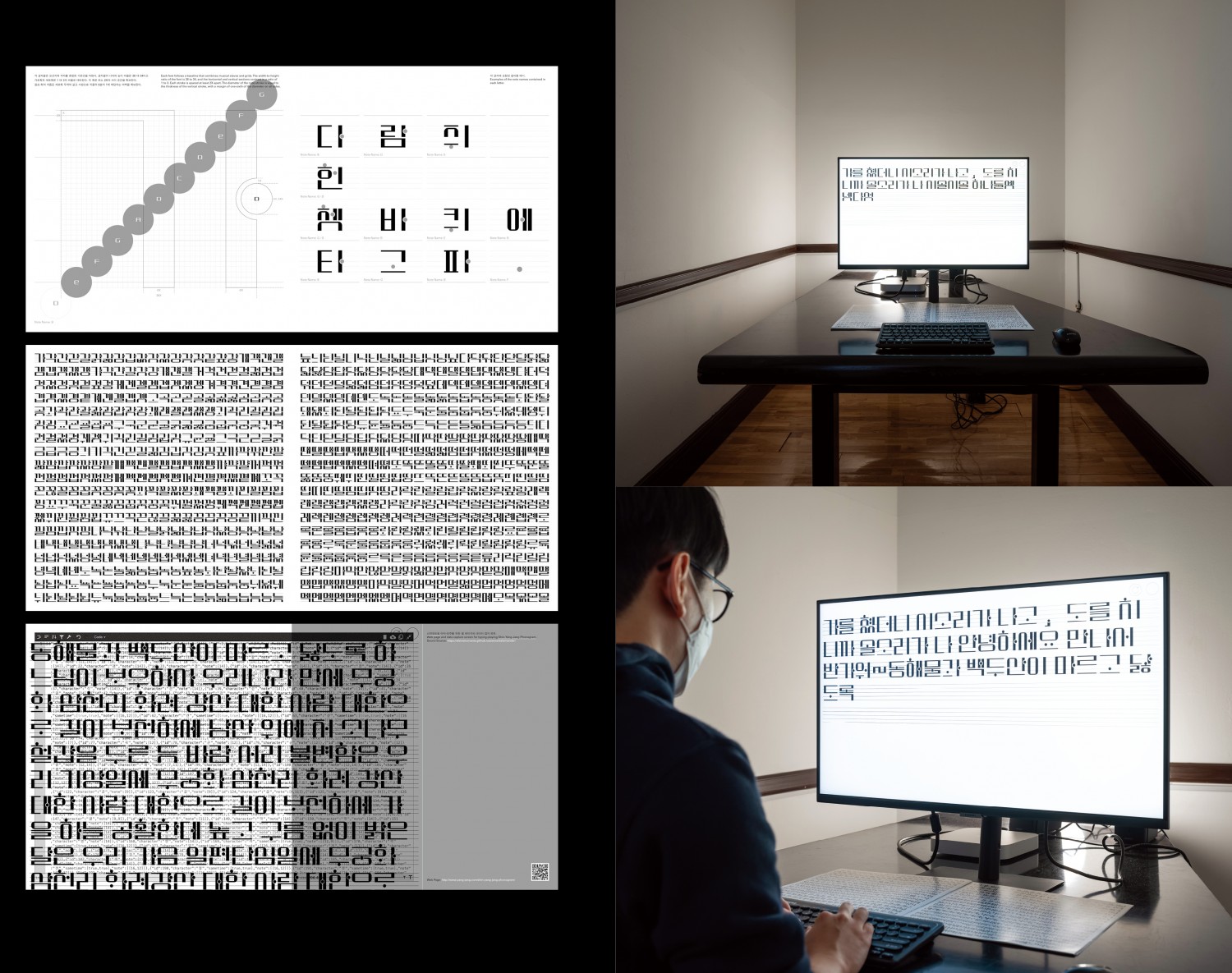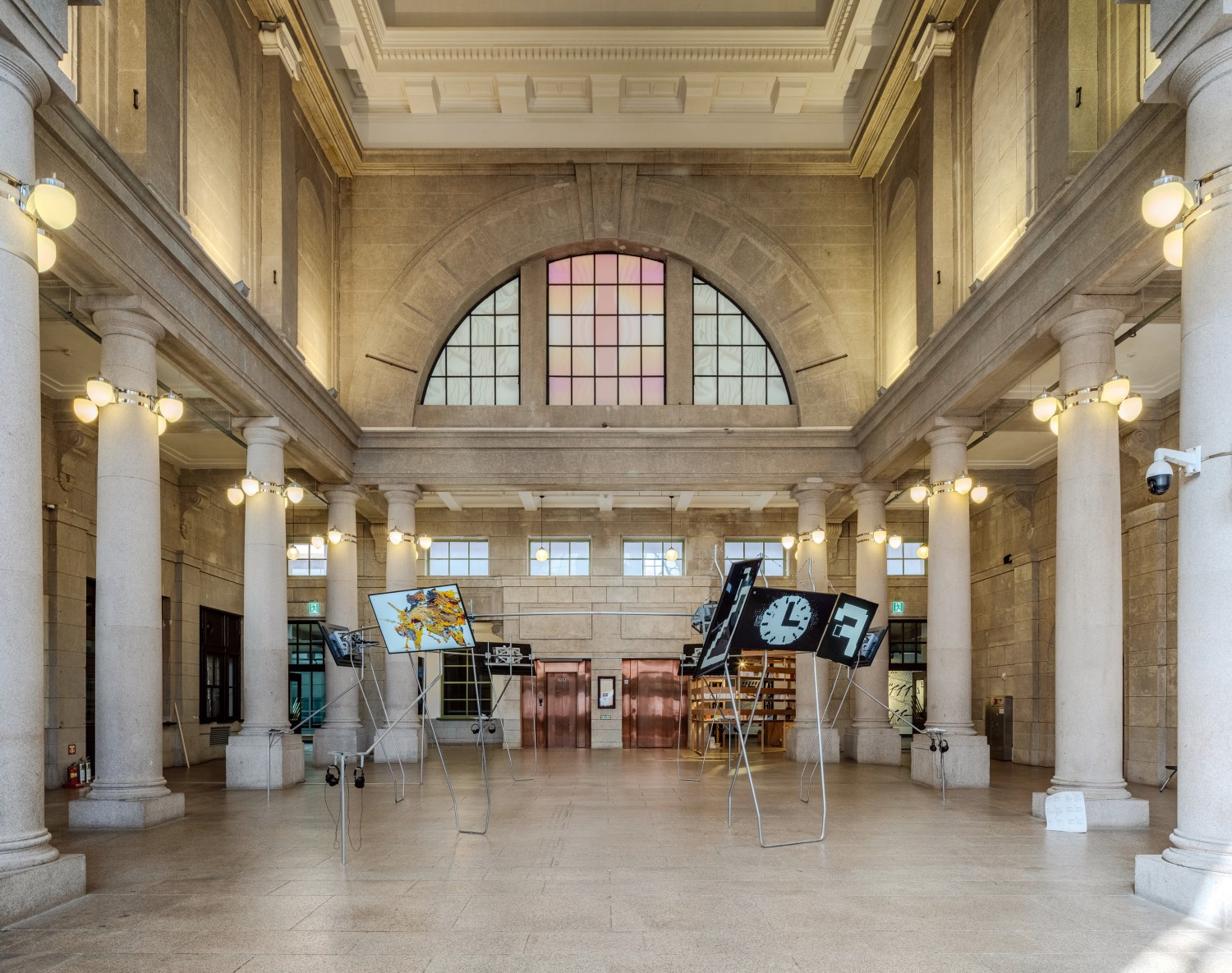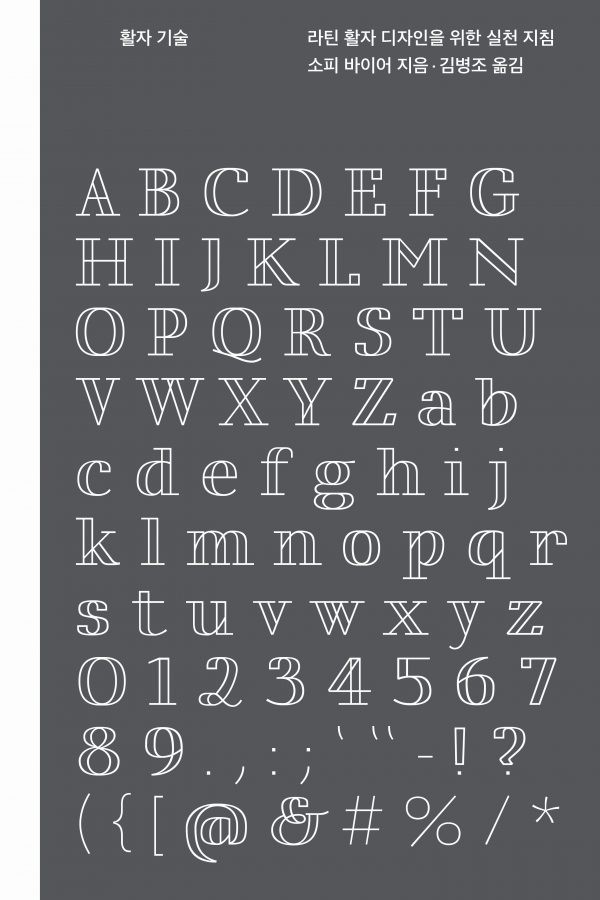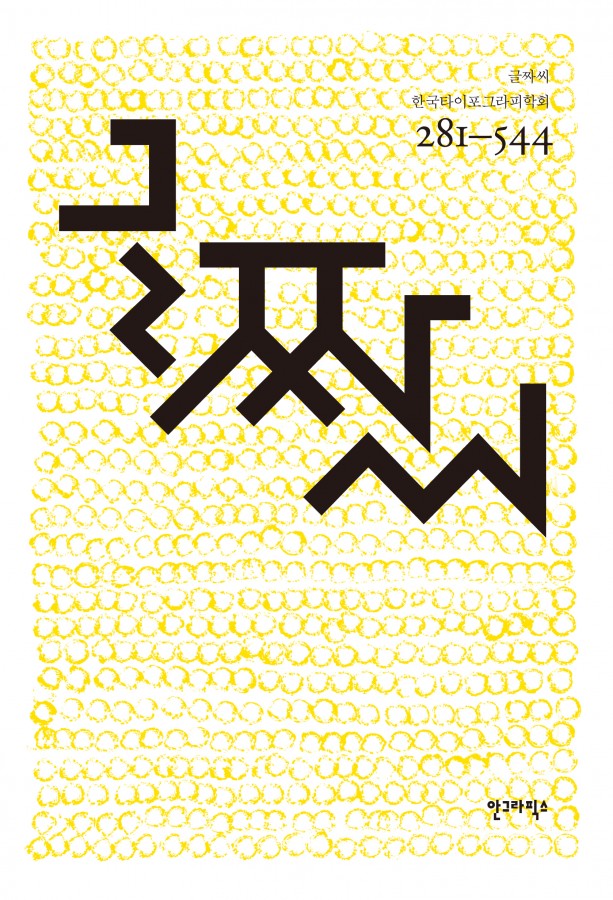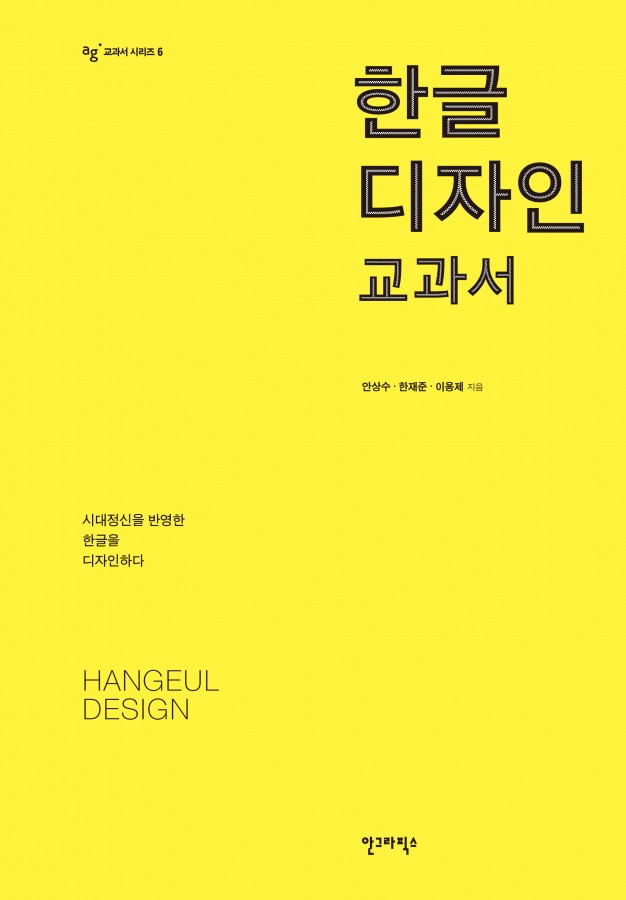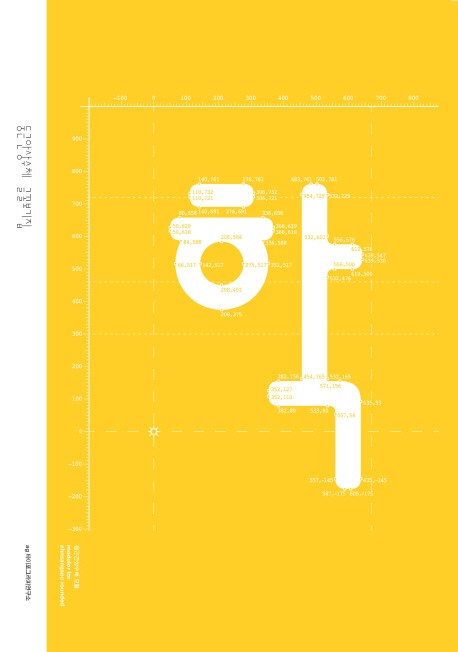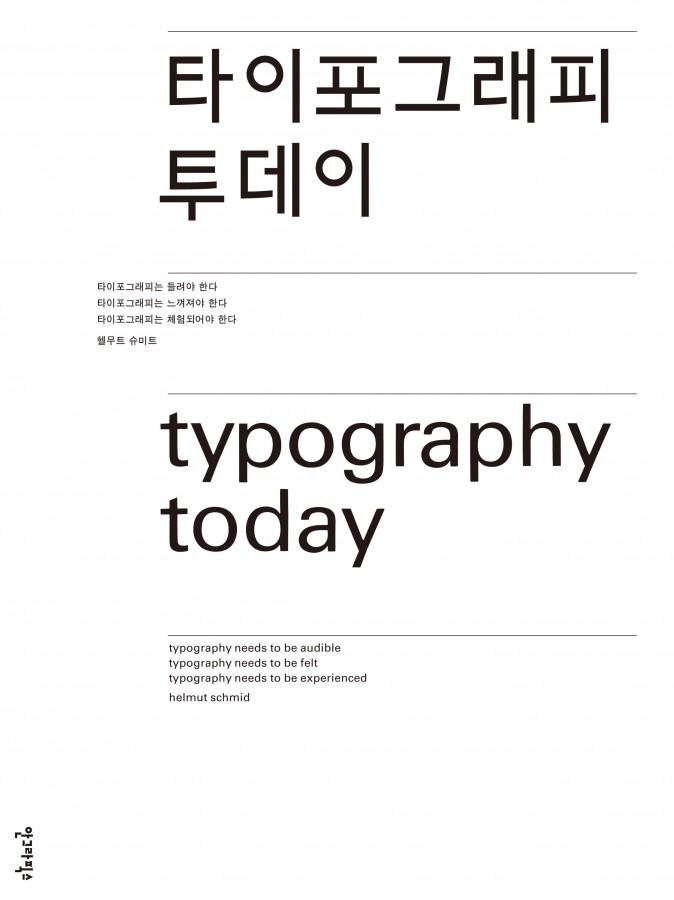Held at Culture Station Seoul 284 from September 19 to October 14, 2023, Typozanchi 2023 International Typography Biennale Open Quotation Marks, Close Quotation Marks focused on the theme of “Typography and Sound” and explored typography’s ability to connect letters and sounds, sight and sound, objects and bodies, and spark experimentation and practice. This book provides a detailed deconstruction of the 39 artists/teams from 16 countries who participated in the exhibition and their works, as well as a wealth of illustrations to bring the works to life.
The titles of the eighth installment, “Open Quotation Marks” and “Close Quotation Marks,” are quotes from Theresa Hakkyung Cha’s Dictee, suggesting sounds that are about to be heard and traces of letters that have already been read. Open Quotation Marks, Close Quotation Marks explores typography as an “art of connection” and its expanding possibilities, with artists working not only in graphic design but also in literature, dance, sculpture, comics, and other fields.
In this book, we also introduce aspects of Typojanchi Saisai 2022-2023: Materialized Sound, Embodied Text, a preliminary event that explored the theme of “typography and sound” from various angles in advance of Typojanchi 2023. The event, which featured creatives from various fields including literature and music as well as design, focused on creative scenes where sound is visualized or objectified through processes such as dictation, typing, printing, and coding, and text is embodied through acts such as playback, reading, performance, and performance, through lectures, workshops, and performances, allowing visitors to encounter the history of typography, examine the present, and imagine the future.
Typojanchi 2023: Open Quotation Marks, Close Quotation Marks Exhibition Foreword
Open Quotation Marks, Close Quotation Marks explores the interstices of language - the collision, erasure, and creation of spoken and written language in the context of identity and power.
Open Quotation Marks, Close Quotation Marks translates or intersects sight and sound to reveal the differences that different senses make.
Open Quotation Marks, Close Quotation Marks finds rhythm in the repetition, variation, and dissonance of letters and sounds, and evokes the labor and craft that underlies them.
Open Quotation Marks, Close Quotation Marks responds to the digital chords or dissonances that disrupt linear order through the use of technology and media.
Open Quotation Marks, Close Quotation Marks finds improvisation and chance in spoken word and movement outside of visual symbols, sharing the vibrancy of typography that oscillates between objects and bodies.
